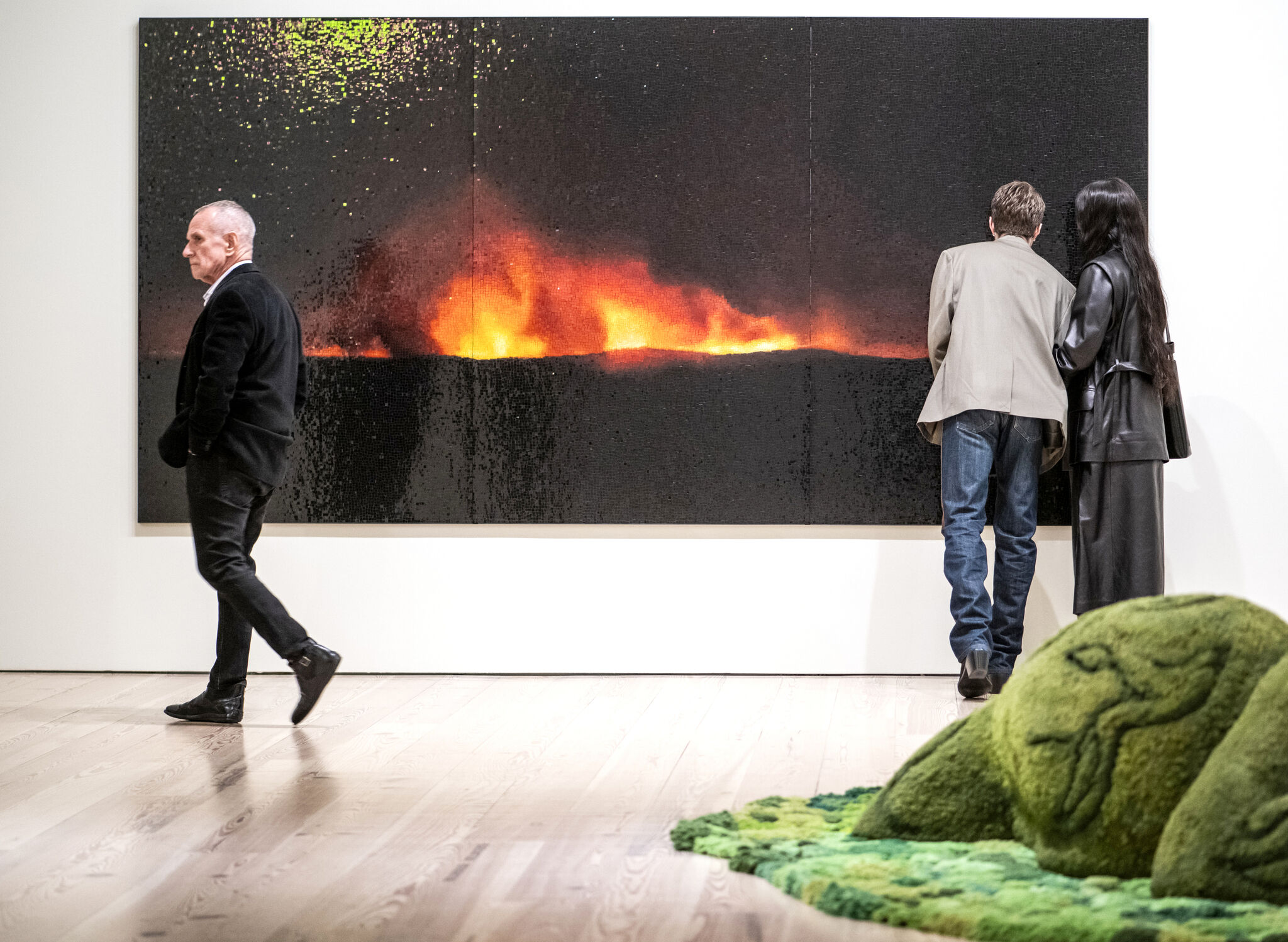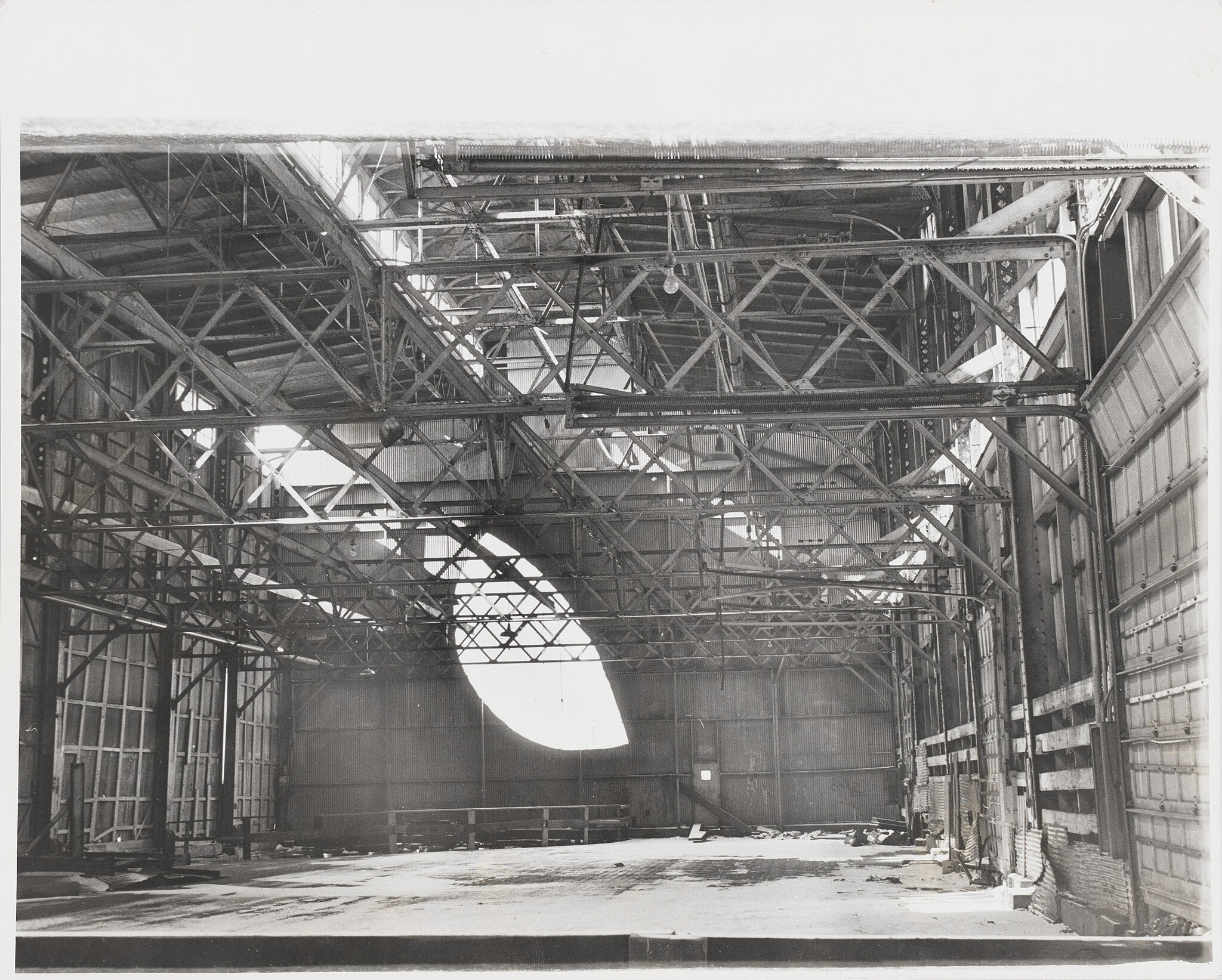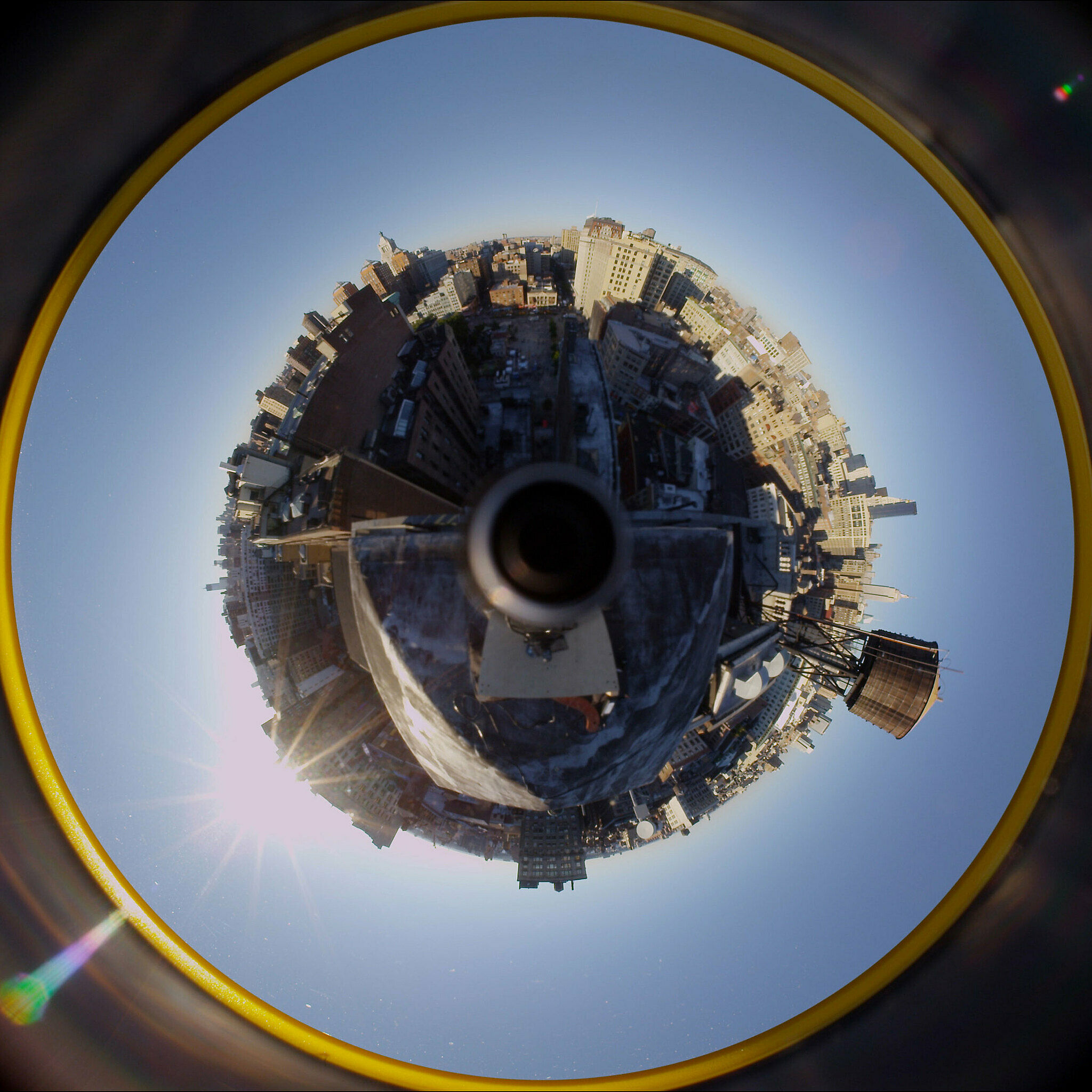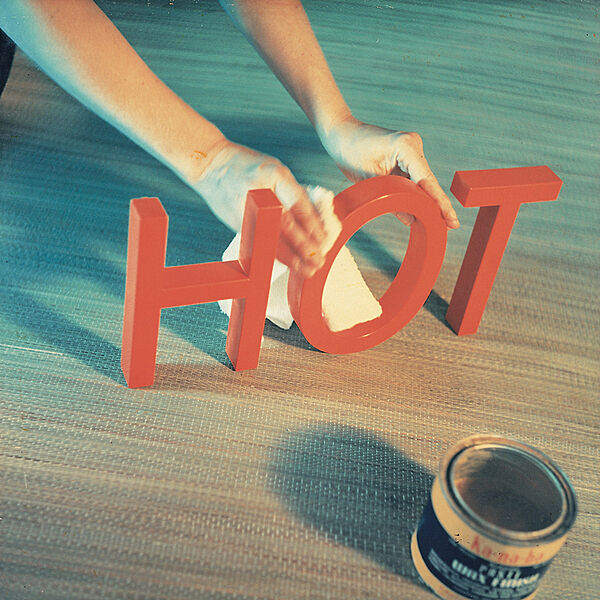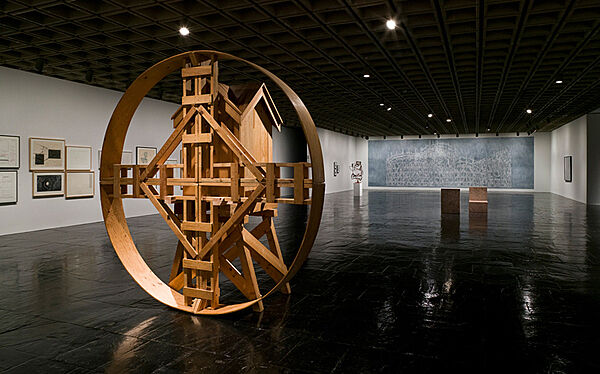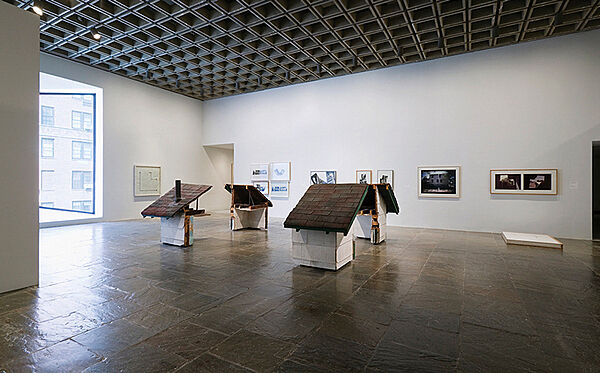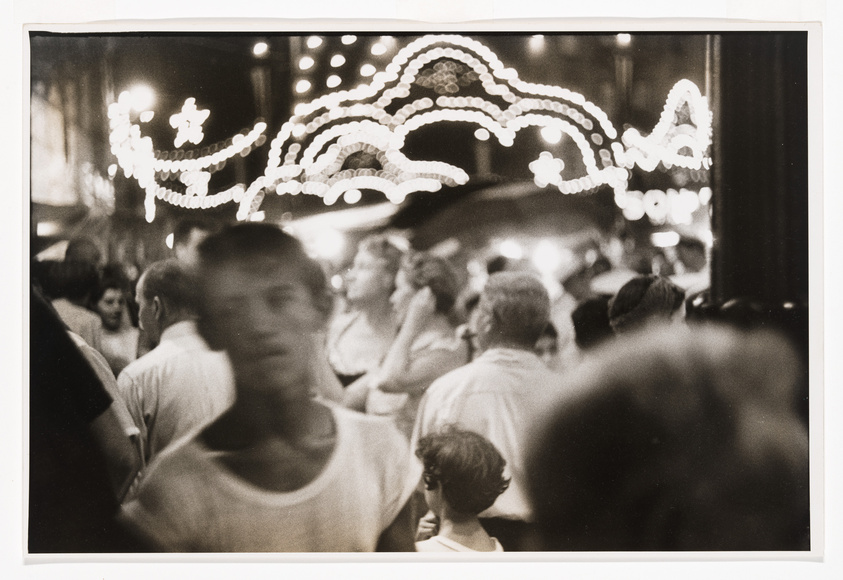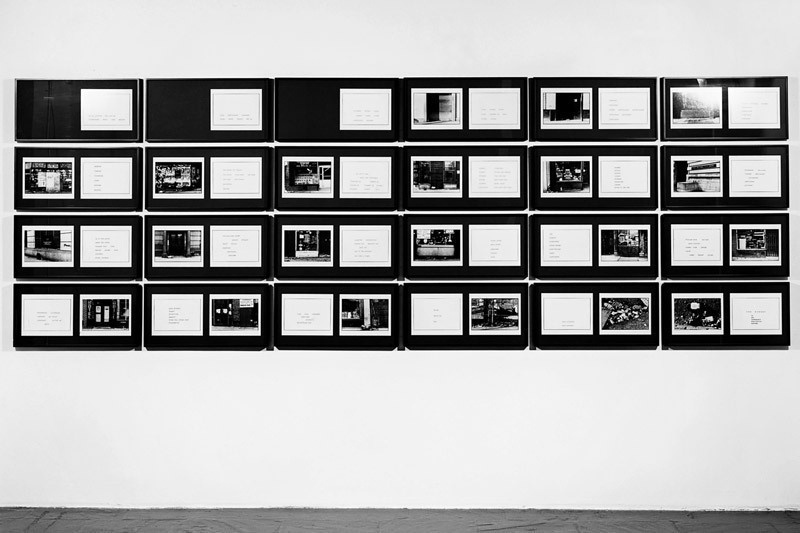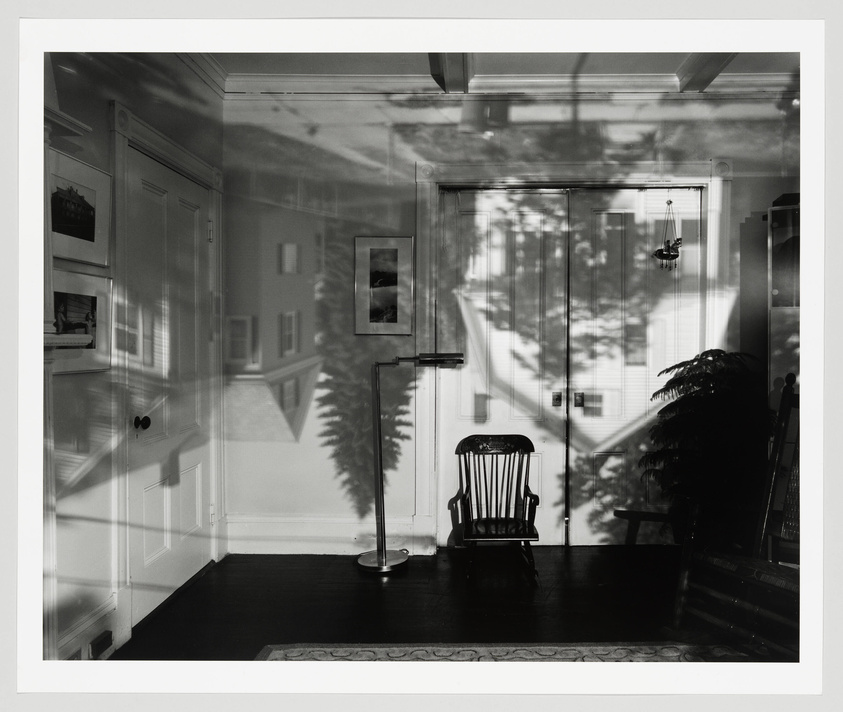Gordon Matta-Clark
1943–1978
Over the course of his brief, frenetic career, Gordon Matta-Clark produced works of art that reflect his belief in the power of transformation—that the world around us is not fixed or concrete, but brimming with untapped potential. Known best for his "building cuts," large-scale sculptural forms he achieved by cutting into existing architecture, Matta-Clark sought to create new understandings of a subject's relationship to space, and to question such seemingly established categories as ownership and intended use.
Collaborative Art: FOOD, Anarchitecture
Throughout the early 1970s, Matta-Clark's approach to artmaking became increasingly collaborative, as he embraced the porosity, changeability, and endless permissiveness of the boundaries between art and life. Most notably, he partnered with a group of fellow artists on FOOD, a fully functioning restaurant that opened in 1971 with communal seating and an open, stage-like kitchen that presented cookery as a kind of performance art.
Matta-Clark also made work at 112 Greene Street, the artist-run exhibition-cum-living space in Soho, and was a central collaborator in Anarchitecture, a collective whose work countered the period's prevailing modernist ethos by focusing on gaps, thresholds, and sites on the margins. To this group, the underground, the outskirts, the unnoticed, unwanted, and unseen were all ripe for transformation.
Art as Intervention: Day's End
A stone's throw from the Whitney's building in Manhattan's Meatpacking District, the nineteenth-century salt shed at Pier 52 provided the site for Matta-Clark's magnum opus of anarchitecure, Day's End (1975). Although officially abandoned, the Hudson River piers had become regular stomping grounds for members of the gay and S&M communities, who frequented the piers as a place for sex, sociality, and sunbathing.
After securing access to the shed (by the addition of his own padlock), Matta-Clark got to work, sawing through portions of the structure's floor and facade. Through a west-facing oculus, light from the setting sun entered; through a maw in the floor, the river surged into view. One day after the project's completion, city officials filled in the gaps in the floor and issued a warrant for Matta-Clark's arrest. But those who experienced the work in its brief moment of activation recall a spectacular scene—a chapel that glorified something much more than light and water.
Through his alchemical experiments, building cuts, films, photo collages, and other propositions, Gordon Matta-Clark helped redefine the limits of how art lives in the world, and of how we might live with it. Although the artist died prematurely in 1978, at the age of 35, his efforts to transform the knowable environment continue to influence artists working today. "We will have to work together," Matta-Clark wrote, "to unravel the unfound."Gordon Matta-Clark, copy of notebook with Automation House, Tree Dance, A W-Hole House, Anarchitecture. Canadian Centre for Architecture, Montreal, Quebec; gift of the Estate of Gordon Matta-Clark, GMCT1260.
Introduction
Gordon Matta-Clark (born Gordon Roberto Matta-Echaurren; June 22, 1943 – August 27, 1978) was an American artist best known for site-specific artworks he made in the 1970s. He was also a pioneer in the field of socially engaged food art.
Wikidata identifier
Q953717
Information from Wikipedia, made available under the Creative Commons Attribution-ShareAlike License . Accessed November 23, 2025.
Introduction
Beginning in 1962, Matta-Clark studied architecture at Cornell University, Ithaca, New York. He received a B.A. in Architecture in 1968.
Country of birth
United States
Roles
Artist, architect, cinematographer, collagist, performance artist, photographer, sculptor, video artist
ULAN identifier
500000316
Names
Gordon Matta-Clark, Gordon Matta Clark, Gordon Matta- Clark
Information from the Getty Research Institute's Union List of Artist Names ® (ULAN), made available under the ODC Attribution License. Accessed November 23, 2025.

